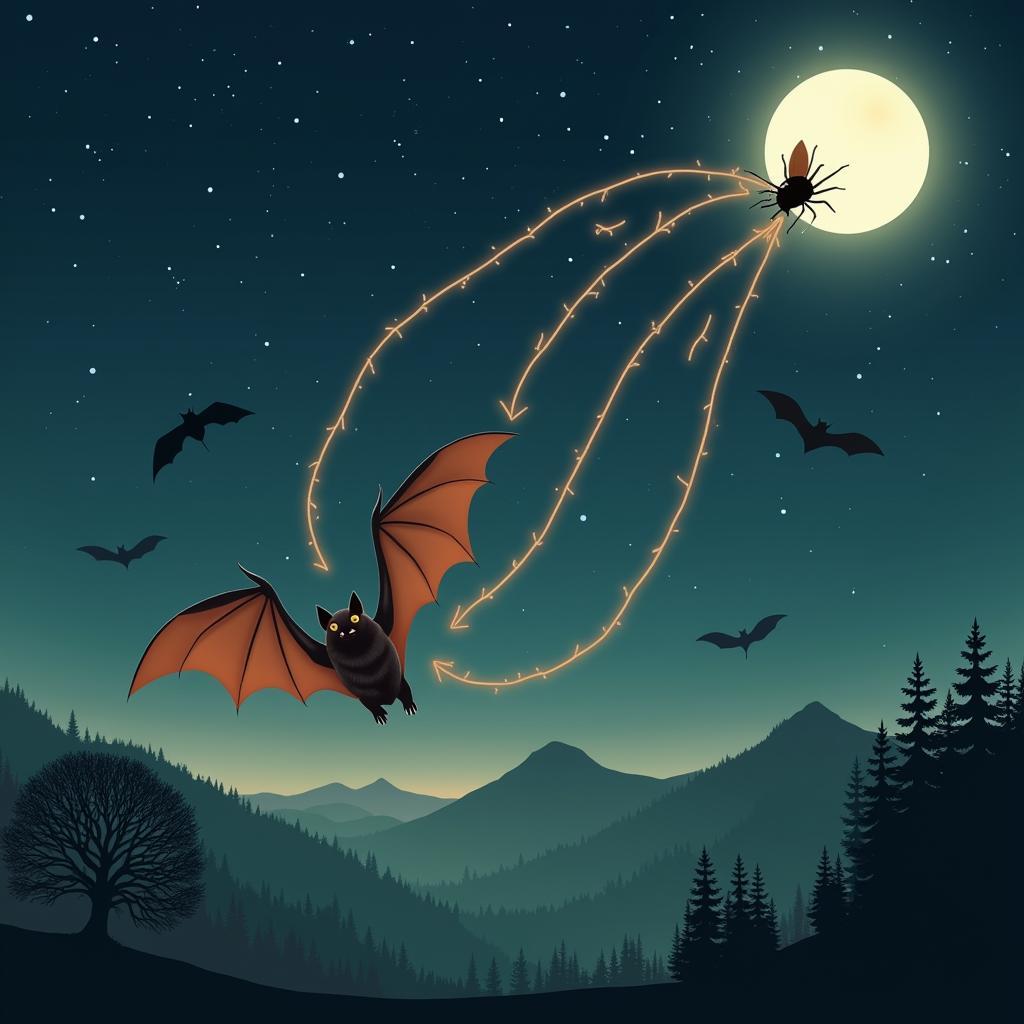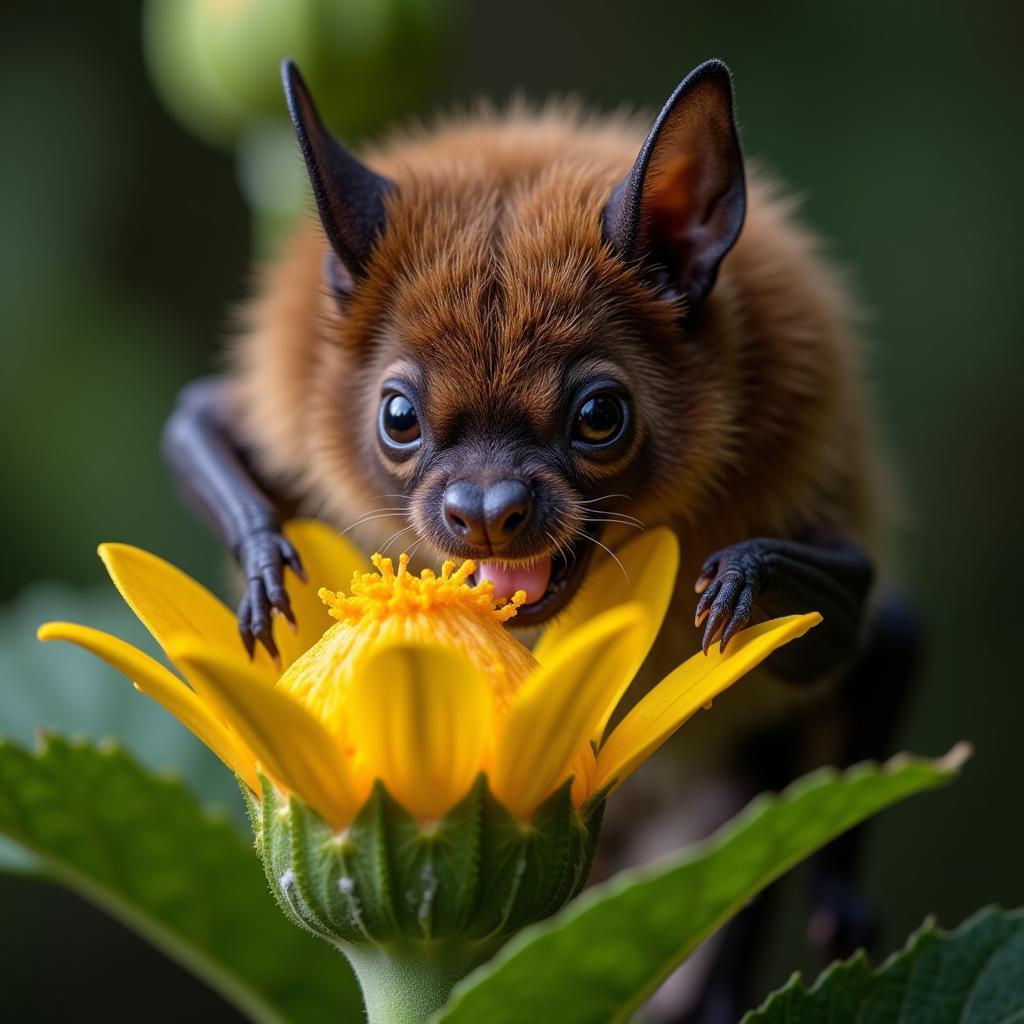You bet there are bats in Colorado! In fact, the Centennial State is home to a surprising diversity of these fascinating creatures. While often misunderstood, bats play a crucial role in Colorado’s ecosystem. This article will delve into the world of Colorado bats, exploring their habitats, habits, and the important ecological services they provide.
Uncovering the Truth: Colorado’s Bat Population
Colorado boasts a healthy population of 18 different bat species. That’s right, eighteen! These range in size from the tiny, flitting Western small-footed bat, barely bigger than a bumblebee, to the impressive big brown bat with its wingspan of over a foot. Contrary to popular belief, not all bats are vampire bats (found only in Central and South America). In fact, all bat species native to Colorado are insectivores, meaning they feast on insects, playing a vital role in pest control.
 Colorado Bat Species
Colorado Bat Species
Where Do Bats Hang Out in Colorado?
Colorado’s varied landscape, from high-altitude mountains to arid deserts, provides a range of habitats for different bat species. You can find them roosting in caves, mines, forests, and even in the nooks and crannies of buildings.
- Caves and Mines: These provide ideal roosting spots for many bat species, offering protection from predators and a stable temperature.
- Forests: Bats utilize tree cavities and loose bark for roosting and raising their young.
- Buildings: Some bat species, like the big brown bat, have adapted to urban environments, finding shelter in attics, barns, and other structures.
Understanding where bats prefer to roost is essential for their conservation, especially as human activities can sometimes encroach on their natural habitats.
The Night Shift: Bats as Nocturnal Predators
Colorado bats are primarily nocturnal, meaning they are most active at night. As the sun sets, they take to the skies, using echolocation to navigate and hunt for insects.
How Echolocation Works:
Bats emit high-pitched sounds that bounce off objects in their environment. By analyzing the returning echoes, they can create a “sound map” of their surroundings, allowing them to detect obstacles and prey even in complete darkness.
 Bat Using Echolocation
Bat Using Echolocation
This incredible adaptation makes bats incredibly efficient hunters. A single little brown bat can consume thousands of mosquitoes in a single night, making them invaluable allies in the fight against pesky insects.
Are Woodpeckers Protected in Colorado? Find Out More!
Interested in learning about other fascinating creatures that share Colorado’s skies? Check out our article on whether woodpeckers are protected in Colorado to discover more about these feathered wonders!
The Importance of Bats in Colorado’s Ecosystem
Bats play a crucial role in maintaining a balanced ecosystem in Colorado and beyond.
- Pest Control: Their insatiable appetite for insects helps keep populations of agricultural pests and disease-carrying mosquitoes in check.
- Pollination: Some bat species are important pollinators, aiding in the reproduction of plants like agave and cacti.
- Seed Dispersal: Fruit-eating bats help disperse seeds, contributing to forest regeneration.
 Bat Pollinating a Flower
Bat Pollinating a Flower
Protecting bat populations is essential for preserving the health and biodiversity of Colorado’s natural environment.
Are There Sharks in the Colorado River? Unraveling the Mystery!
While we’re on the topic of intriguing wildlife, you might be surprised to learn that there are no sharks in the Colorado River. However, the river is home to its own unique aquatic inhabitants. To delve deeper into the mysteries of the Colorado River’s ecosystem, explore our article: Are there sharks in the Colorado River?
Conclusion: Appreciating Colorado’s Bats
From the high peaks to the desert plains, bats are an integral part of Colorado’s natural heritage. These fascinating creatures, often misunderstood, are essential for a healthy ecosystem. By learning more about them and supporting conservation efforts, we can ensure their continued presence in our skies for generations to come.
Remember, if you encounter a bat, it’s best to observe it from a safe distance and avoid disturbing it. If you have concerns about a bat in your home or property, contact a wildlife professional for assistance.
